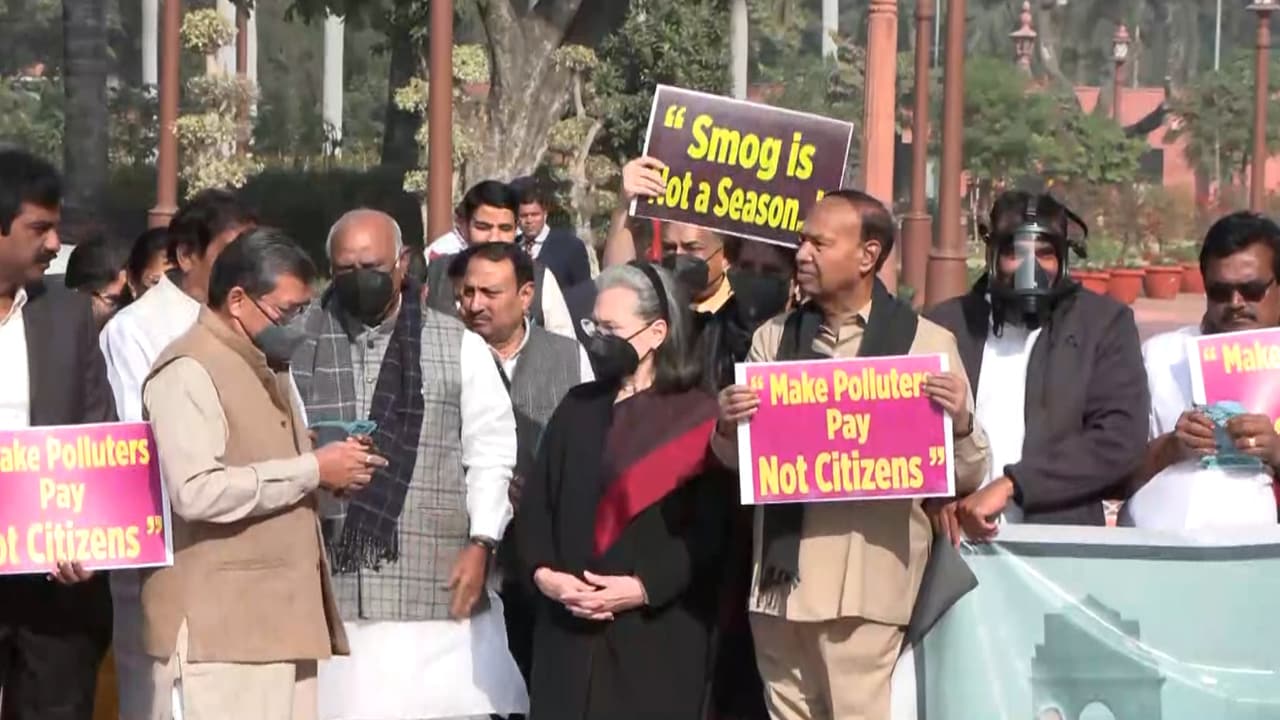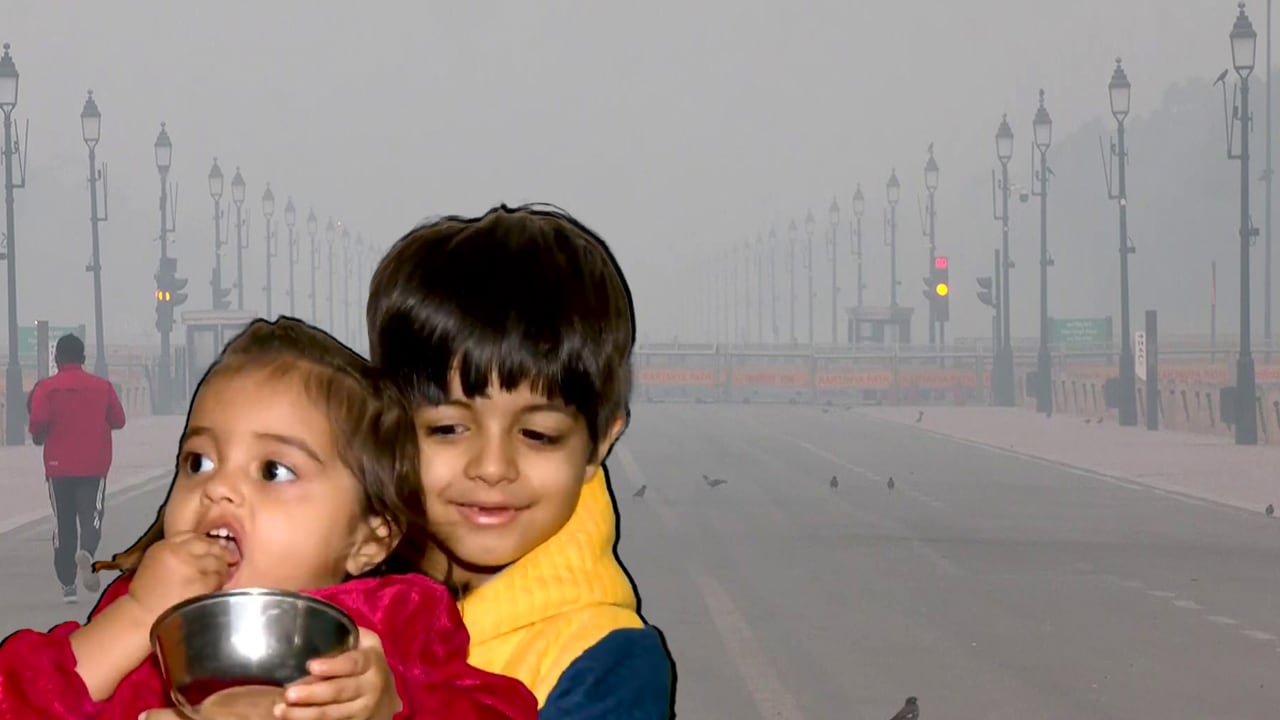- Home/
- Declining Fertility Rates In India: Are Air Pollution, Heat, Or Stress The Biggest Health Threats?
Declining Fertility Rates In India: Are Air Pollution, Heat, Or Stress The Biggest Health Threats?

There is a mass transformation in India's fertility landscape as the dwindling fertility rate is raising alarm bells. Non-communicable diseases are increasingly recognized as a significant factor in the declining fertility rates in India, alongside behavioural and lifestyle determinants. Recent research by the United Nations Population Fund (UNFPA), the Indian Ministry of Health and Family Welfare, and others have confirmed that India's fertility rate is dropping, with major new contributors being air pollution, heat, and chronic stress. While all these factors contribute to the low fertility rate, air pollution is the first definite threat whose impact is measurable in terms of its impact on the systemic reproductive system in major Indian cities.
India's Total Fertility Rate has seen a historic drop, reaching the replacement level of 2.0 as per the National Family Health Survey-5 (2019-21) and continuing to decline to 1.9 by 2023 in the Sample Registration System report. While this signals success in family planning, a growing body of Indian research suggests that environmental and lifestyle factors like air pollution, extreme heat, and chronic stress are quietly contributing to reproductive challenges, potentially pushing the fertility rate further down and impacting the quality of overall reproductive health.
Air Pollution Effects On Fertility
When it comes to explaining the impact of air pollution on male fertility rates, the need to understand how particulate matter 2.5 enters the bloodstream needs to be comprehended. The fine particulate matter causes oxidative stress, which lowers sperm count and causes irreparable damage to the DNA.
In the review from Environmental Health (2021), the direct correlation between breathing in particulate matter 2.5 to a direct lowering of sperm count in the male population is present.
Another research piece from All Indian Medical Sciences (2020) found a significant link between high exposure to PM2.5 (fine particulate matter) and a 15-20% reduction in sperm count. This proves that exposure to pollutants like vehicle emissions and industrial chemicals can damage sperm DNA, directly compromising the state of male reproductive health.
The impact on air pollution is not limited to male fertility, as female fertility and pregnancy are also deeply effected by the rampant air pollution. The deferential effects on pregnancy can be as follows:
- Hormonal Disruption: the sensitive period of pregnancy requires a hormone level that is responsible for a proper environment for fetal development.
- Reduced Ovarian Reserve: This means that the level of eggs in the ovaries may be reduced in quantity, thus reducing the chances of pregnancy.
- Other Risks: The increased chances of miscarriage, low birth weight, and preterm births can endanger the quality of life of the fetus is possible.
Heat Stress
The two major factors that effect male and female fertility are primarily heat and chronic stress, which are common in the tropical temperate climate of India. The thermal stress from the extreme heat hinders the biological mechanism of spermatogenesis that requires cooler temperatures, below 2-3 degrees Celsius.
There is a direct link between extreme heatwaves in Central India, as it is near the equator for causing a temporary drop in the ability to reproduce.
Research in The Lancet Planetary Health (2020) suggested that prolonged heat exposure may reduce the likelihood of conception in women by 10-20%, particularly in rural areas without access to cooling. Whereas extreme heat exposure in the first trimester is associated with a higher risk of miscarriage and preterm birth, according to the Indian Journal of Public Health.
Chronic Lifestyle Stress
The structure of corporate India has long working hours, which poses significant challenges to have their own families while juggling a career. This, coupled with parenthood, directly effects the fertility rates in India. While other issues, like limited access to paid childcare, cause extreme stress on the minds of people.
Chronic stress disrupts the hypothalamic-pituitary-gonadal axis, which negatively effects the reproductive hormone balance.
While age and chronic stress remain key factors that impact fertility rates. The most significant factor is air pollution, which poses a pervasive, unavoidable public health hazard effecting even healthy individuals. In order to curb the pollution from air pollution in India, it is important for the system to take action along with measures that can be adopted by individuals. The persistent air pollution is an acute but persistent environmental toxin layered on top of lifestyle stress.
Practical Ways To Protect Your Fertility
There are a number of ways through which you can protect your fertility; these ways are as follows:
- Lifestyle modifications: Consuming a diet with plenty of antioxidants, exercising, quitting smoking, and limiting alcohol.
- Pollution Mitigation: Using high-quality air purifiers at home, wearing N99 masks during travel, and avoiding outdoor exercise during severe smog.
- Proactive Health Checks: There needs to be reproductive checks for both men and women as part of routine health checks, not just crisis intervention.
Even the United Nations has flagged the global fertility crisis and where India stands, and the factors that are causing it. It is imperative to be proactive to act before it is too late. For the health of the next generation, policy must move beyond simple family planning goals to actively address these silent, environmental health crises, while also supporting parents with work-life balance and affordable childcare options.
Disclaimer: This content, including advice, provides generic information only. It is in no way a substitute for a qualified medical opinion. Always consult a specialist or your own doctor for more information. NDTV does not claim responsibility for this information.
References:
Jana, A., Singh, B. K., & Singh, G. (2025). In-utero exposure to PM 2.5 and adverse birth outcomes in India: Geostatistical modelling using remote sensing and demographic health survey data 2019-21. PLOS Global Public Health, 4(2), e0002875.
Ministry of Health and Family Welfare, Government of India. (2022). National Family Health Survey (NFHS-5) 2019-21: India.
Office of the Registrar General & Census Commissioner, India. (2023). Sample Registration System (SRS) Statistical Report 2020. Ministry of Home Affairs.
Research on Air Pollution and Sperm Quality. (2020). All India Institute of Medical Sciences (AIIMS) & CSIR-National Environmental Engineering Research Institute (NEERI).
The Lancet Countdown on Health and Climate Change. (Various Years). Tracking progress on health and climate change.
Varghese, P. S., Balasubramanian, S., & Ponnampalath, V. (2019). Elevated levels of bisphenol A in human samples in India: A health concern. Environmental Science and Pollution Research, 26, 32800-32808.
World Health Organization (WHO). (2020). Impact of climate change and heat on human reproductive health.
Latest Stories
- Reported by Ishika Verma | Saturday December 06, 2025
New Delhi: Two days after Chief Minister Rekha Gupta held a high-level review meeting, the Delhi government on Saturday formally notified the constitution of a new Expert Group on Air Pollution Mitigation and a High-Level Implementation Committee.
- Saturday December 06, 2025 , New Delhi
Delhi Chief Minister Rekha Gupta on Thursday claimed that the capital had "celebrated Diwali and maintained air quality."
- Reported by Ankita Tiwari | Friday December 05, 2025 , New Delhi
Every winter, Delhi's air turns toxic, and this year is no exception. After the monsoon, pollution levels rise, but the real crisis begins when temperatures plunge.
- Indo-Asian News Service | Friday December 05, 2025 , New Delhi
Amid continuing poor air quality in the national capital, doctors on Friday noted that air pollution can not only harm your lungs or lead to cardiac illness but can also heighten anxiety and trigger panic-like symptoms.
- Reported by Ishika Verma | Thursday December 04, 2025 , New Delhi
The Delhi government on Thursday rolled out its "toughest-ever" anti-pollution drive in the capital -- deploying mist spray technology, tightening enforcement, and warning officials of strict action.
................................ Advertisement ................................
Latest Videos
Opinion
Blog | Well Done, Delhi. You've Turned Lung Sacrifice Into A Badge Of HonourSaikat Kumar Bose
Monday November 10, 2025Till some years back, Delhiites would ask angry questions to those in power about the capitals annual tryst with toxic air. This has changed. Those in the driving seat dont see the need to answer now.
Opinion | Why Indians Have Just Given Up On Air Pollution CrisisTanushree Ganguly
Friday December 20, 2024While some may argue that people in Delhi are now more aware of air pollution than they were a decade back, my rebuttal would be that awareness does not mean that people are concerned.
Opinion | You Must Outrage Over Filthy Air More Than Once A YearJyoti Pande Lavakare
Tuesday December 10, 2024Delhi welcomed us with monsoon rains and mangos. We were home. Fast forward a couple of years, in the winter of 2012, I found myself in denial about something other parents, mostly expats, were calling toxic air.
Opinion | Delhi's Air Pollution Situation Is Like A Bad MarriageNishtha Gautam
Friday November 22, 2024On a good day, such as today, the AQI reading in Delhi is 407. We are jubilant at the sickly sunshine trickling through the slightly dissipated smog. At least its not 1600.
दिवाली... पराली... सियासी जुगाली!Ashwini kumar
Monday November 18, 2024दिल्ली-एनसीआर में प्रदूषण का समाधान तो आज तक मिला नहीं. हर साल चिंतित होकर हम-आप सांसों की तकलीफ के साथ-साथ दिल और ब्लड प्रेशर के मरीज भी क्यों बनें?


















